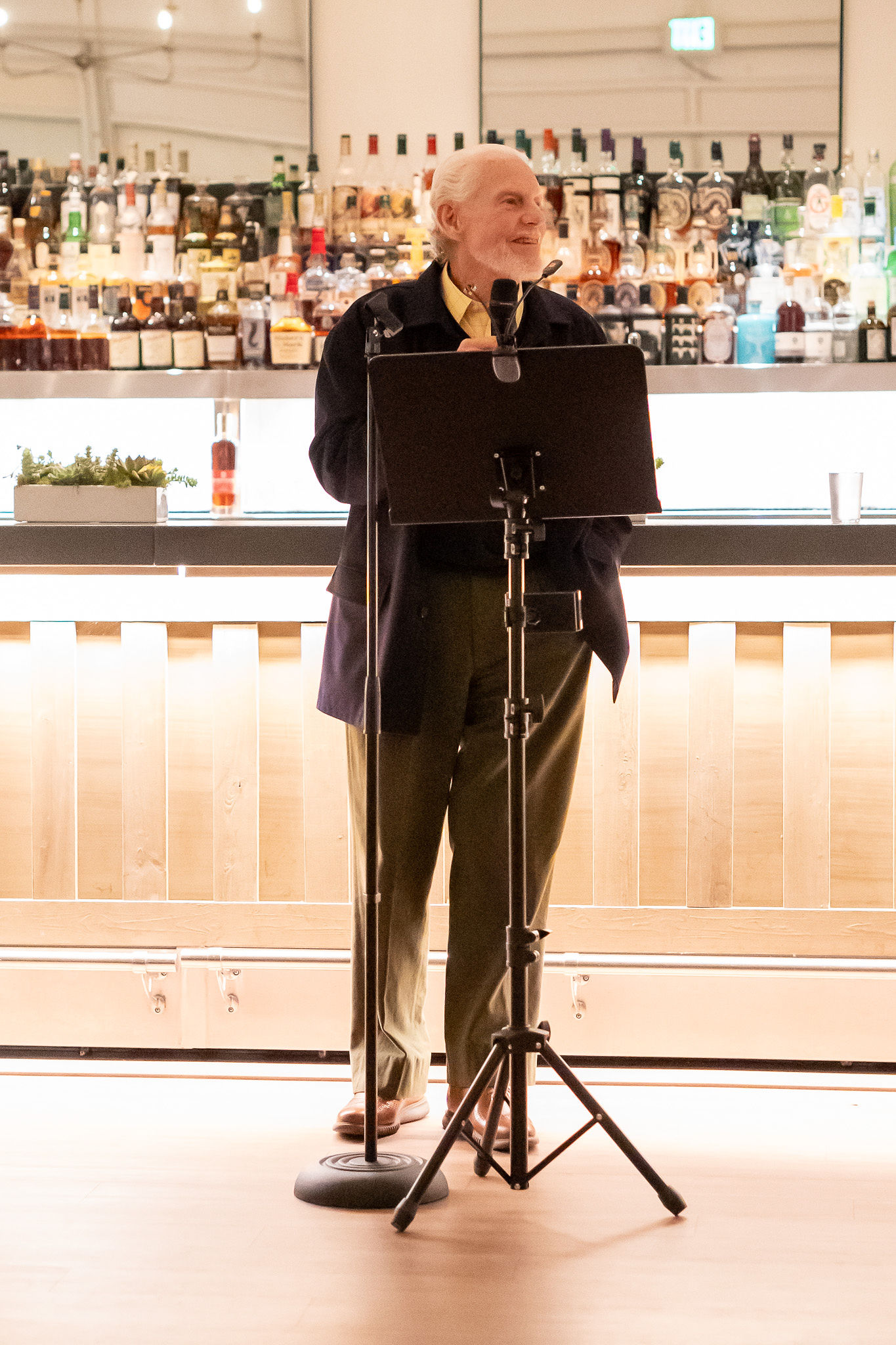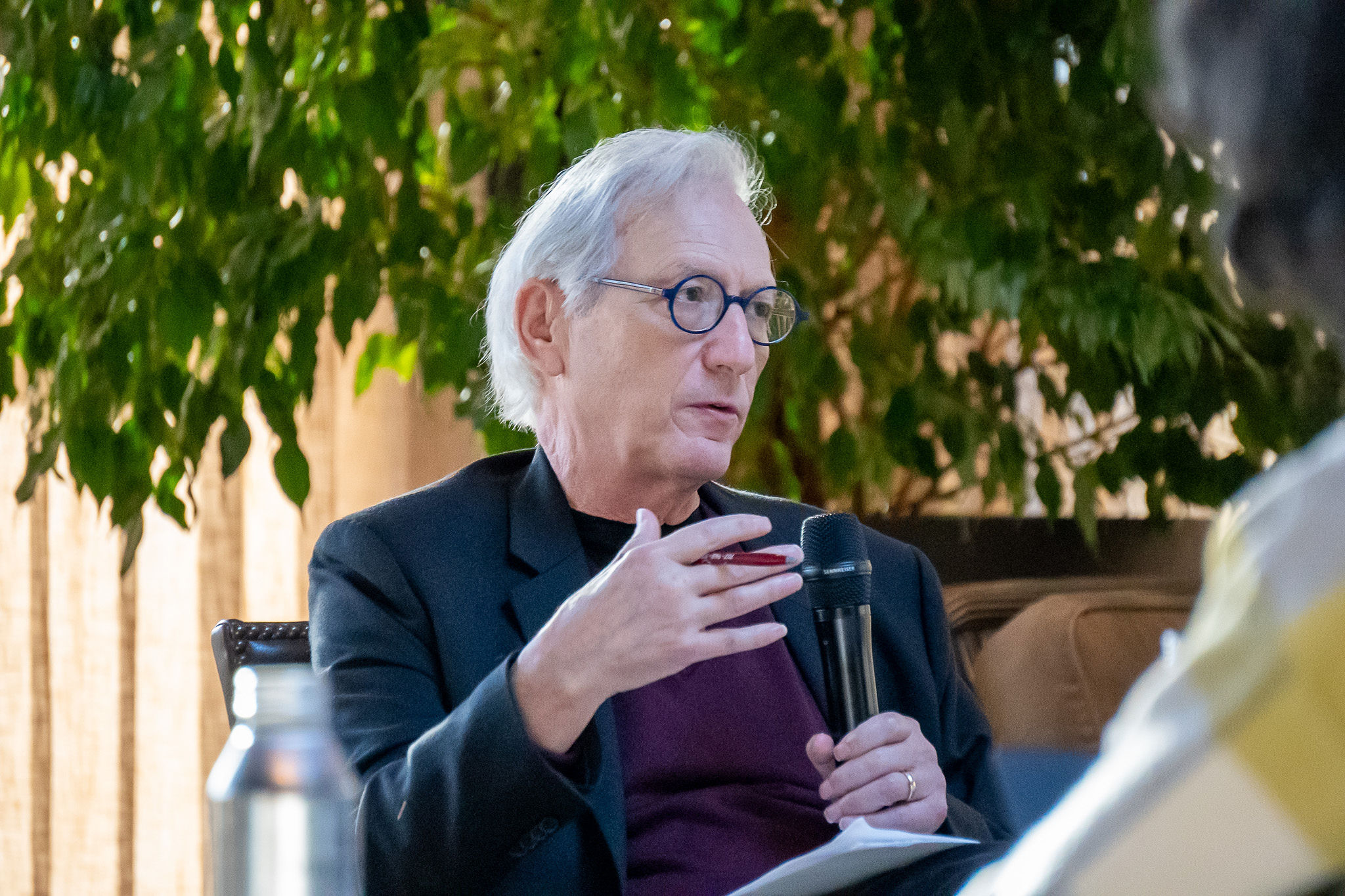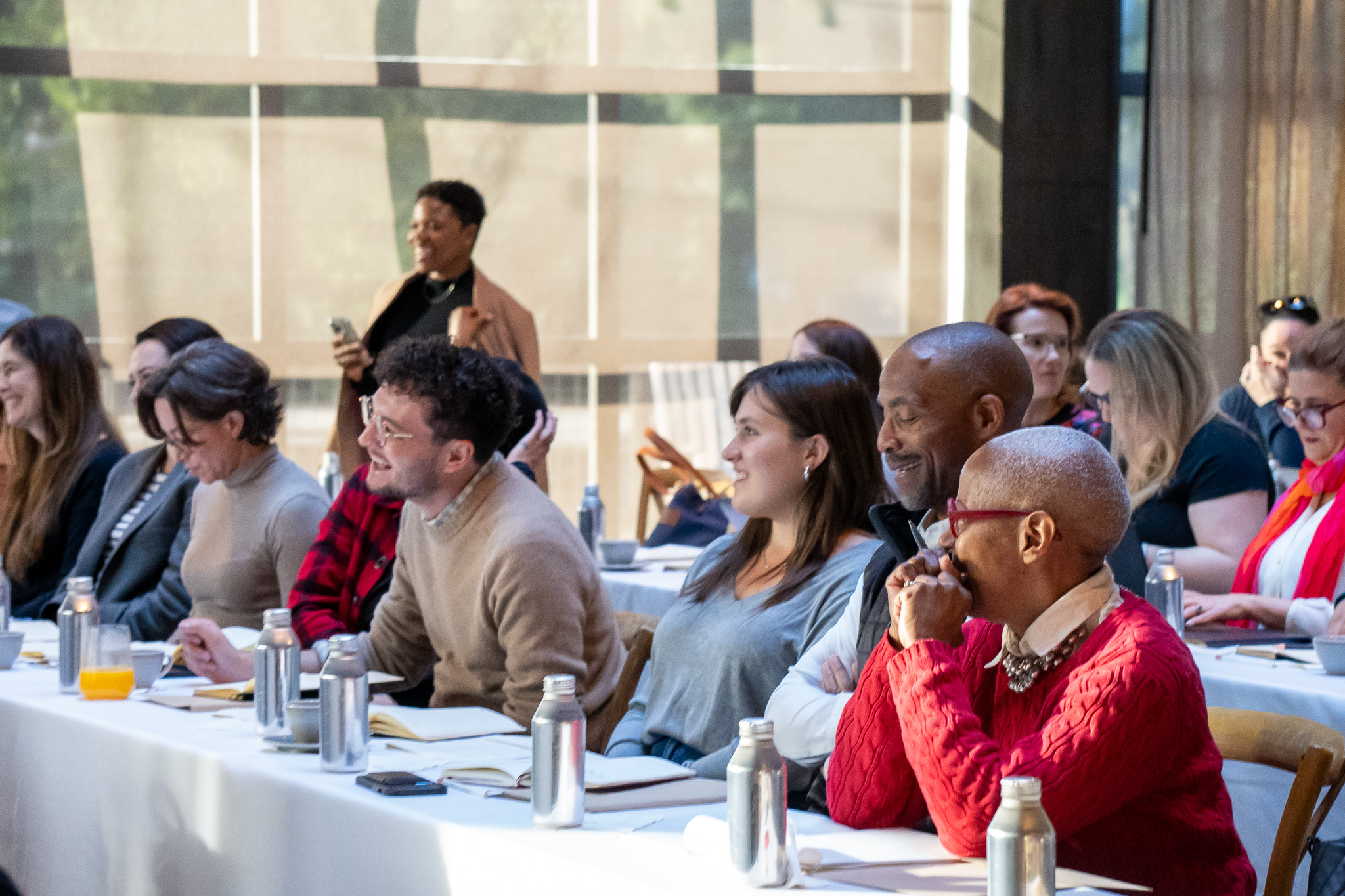
Where do you get advice on what wine to buy? There was a time, not long ago, when many people embraced a simple answer: “This got a 97!” Then numbers became so ubiquitous that they became meaningless, but, regardless, can wine really be reduced to a number? Now the Internet is filled with influencers, though it’s not clear who they influence or, in some cases, what they’re selling other than a bubbly personality.
We’ve always said the best way to establish a long-term love affair with wine is to find a caring wine shop that will make you feel welcome and introduce you to new things. We understand, however, that some areas don’t have good stores and, and in others, consumers might not walk in because they feel they have to be experts or risk being treated badly.
Traditional media, including wine media, is staggering. We’re talking here about resources you can hold in your hand, print publications. For example, as far as we can tell, the number of full-time wine writers at U.S. newspapers can be counted on one hand and some legacy wine magazines are struggling. If wine is important – and we think it is, because it makes life richer – who will be the guides for the next generation of potential wine lovers?
 That was the theme of this year’s Wine Writers’ Symposium at Meadowood Napa Valley (formerly the Symposium for Professional Wine Writers). Almost 20 years old, it is the premier gathering of established and emerging voices in wine. It was the brainchild of William Harlan, of Meadowood Napa Valley and Harlan Estate, and the Napa Valley Vintners, and is made possible with additional support from Napa wineries and other members of the industry. Dottie is on the board of the symposium. We both spoke this year.
That was the theme of this year’s Wine Writers’ Symposium at Meadowood Napa Valley (formerly the Symposium for Professional Wine Writers). Almost 20 years old, it is the premier gathering of established and emerging voices in wine. It was the brainchild of William Harlan, of Meadowood Napa Valley and Harlan Estate, and the Napa Valley Vintners, and is made possible with additional support from Napa wineries and other members of the industry. Dottie is on the board of the symposium. We both spoke this year.
(William Harlan of Harlan Estate, co-founder of Meadowood, Napa, and founder, with Napa Valley Vintners, of the symposium. All photographs by Alisha Sommer.)
The theme this year: Exploring the Edge of Wine. The ambiguity of the title was clearly intentional: Does that mean wine writing is on a cliff? Or is this about how to bring more edge to wine writing? Or are we discussing methods of wine communication that are new, different, perhaps more compelling? Edgy?
The noted British wine writer Andrew Jefford, whose thoughts on wine were collected last year into the book “Drinking With the Valkyries,” began the three-day event by bringing the ancient topic of wine all the way up to the modern issue of Artificial Intelligence. He said the primacy of the tasting note “in current wine discourse strikes me as an enigma. Its practical benefits are chimerical. It’s a kind of mad granularity. For most readers, it brings nothing but doomed aspiration: an echo chamber in which fulfillment is forever postponed.
“There are consequences. Once AI has learned reputation, tone and lexicon, and absorbed wine hierarchies, it will happily set about generating tasting notes, even without sensory apparatus of its own. The audit never comes. It will eventually write features with ease, too, since much of this is un-critical and edgeless: perfect AI fodder….
“In an age of effective generative AI, all that will be left for human cranial jelly to explore will be the edge. Out on the edge, there are no large models or datasets for AI to gobble up. Writing at the edge needs a brain.”
So what happens now? Here are some of our takeaways from the symposium:
 --Wine communication must become more diverse in every way. Part of that is who is doing the communicating. Of the 22 fellows, 19 were women and many were people of color. To connect with younger people in an increasingly diverse world, this is critical.
--Wine communication must become more diverse in every way. Part of that is who is doing the communicating. Of the 22 fellows, 19 were women and many were people of color. To connect with younger people in an increasingly diverse world, this is critical.
(Group shot: 2024 Wine Writers' Symposium fellows, panelists and planners)
The means of communication are already changing and need to continue to change. Podcasts and TikTok were the focus of a great deal of discussion. When we started writing Tastings in The Wall Street Journal in 1998, our printed column was popular and people enjoyed reading about us and our life with wine and children. But when we began to appear on Martha Stewart’s show, that was different: People felt they knew us. They had seen us in their homes. In a similar way these days – but turbocharged – various platforms are touching consumers in wildly divergent ways. How do all of these platforms work behind the curtain? Are they transparent? What principles do they adhere to? Do their methods pass the sniff test? This should matter to you as a consumer because you should know the motivations behind a piece of wine advice. That can be a simple disclosure that says a wine region paid for this trip or these samples were sent by the winery’s representative. We are increasingly in an era of “sponsored content.” It’s important to know what content is sponsored and who’s sponsoring it.
 --The economics of wine communication sucks, and this matters. Writing about wine these days pays next-to-nothing per word. It seems to us that most wine communicators have regular jobs or partners who work. Tips on how to make it work financially were especially well-received at the symposium, particularly the advice that wine communicators should think of themselves as small businesses and act that way, setting up LLCs, for instance.
--The economics of wine communication sucks, and this matters. Writing about wine these days pays next-to-nothing per word. It seems to us that most wine communicators have regular jobs or partners who work. Tips on how to make it work financially were especially well-received at the symposium, particularly the advice that wine communicators should think of themselves as small businesses and act that way, setting up LLCs, for instance.
(John speaking at the symposium)
--The wine industry and the beverage alcohol industry in general are deeply concerned about the no-alcohol/low-alcohol/health-first/neo-prohibitionist trends. We are all for health and responsible attitudes toward alcohol. Wine, at its core, to us is a social drink, enjoyed most of the time with food. If society frowns upon it because it contains alcohol, the industry has cause for concern. That said, we’ve been journalists for a long time and tend to be skeptical of Trends That Will Change The World Forever (remember when Beyond Meat stock sold for more than $200? It’s about $7 now). That doesn’t mean wine writers and the wine industry shouldn’t take this seriously, but context and a longer view are important.
--On the other hand, for those who are drinking wine to get high—and we know they exist—other products that deliver a buzz are booming. Hard seltzer is massive. Marijuana and various products made with cannabis are growing, well, like weeds. To us, this is one challenge for wine communicators: to simply explain why wine is and will always be special. Wine, for us, is about taking time to savor life and each other. It’s never so much what’s in the bottle as what’s in the moment. It’s not about drinking to get high. Can a new generation of wine communicators help a new generation of would-be wine drinkers embrace that?
 --Wine packaging is changing. Lighter bottles are in the future, as wineries and consumers are increasingly realizing that their choices matter. Jefford said, “What’s certain is that the wine world has much to feel uncomfortable about. This is true in structural terms – since the international wine trade is based on the shipping of heavy liquids on long sea routes, packaged in energy-intensive glass. It’s also true in promotional terms, with its flaunting of luxuriously unsustainable lifestyles. I’ve seen Champagne houses fly journalists from Australia to Europe and back for two days in a hotel, simply to launch a new vintage of a Prestige Cuvée. This is climate crime, in that the environmental cost to future generations goes unpaid.”
--Wine packaging is changing. Lighter bottles are in the future, as wineries and consumers are increasingly realizing that their choices matter. Jefford said, “What’s certain is that the wine world has much to feel uncomfortable about. This is true in structural terms – since the international wine trade is based on the shipping of heavy liquids on long sea routes, packaged in energy-intensive glass. It’s also true in promotional terms, with its flaunting of luxuriously unsustainable lifestyles. I’ve seen Champagne houses fly journalists from Australia to Europe and back for two days in a hotel, simply to launch a new vintage of a Prestige Cuvée. This is climate crime, in that the environmental cost to future generations goes unpaid.”
Beginning this year in California, purchasers of wine and spirits in glass containers pay a deposit that can be refunded to them by recycling centers or donated to nonprofit recyclers.
Cans are coming on strong, and not just for wine. Erica Duecy, drinks data and content consultant and host of the Business of Drinks podcast, said in a presentation that a canned vodka-based seltzer made by Gallo called High Noon has dethroned Tito’s vodka as the No. 1 spirit in the United States. RTD – ready to drink – is the acronym on everyone’s lips in the industry, whether it’s pre-made cocktails or “functional drinks” with ingredients like CBD or other things that supposedly enhance mood and health.
Duecy told us in an email later: “Britt West, head of Spirit of Gallo, attributes the shift to the ability of this new generation of ready-to-drink canned beverages to fit into so many more usage occasions than spirits have previously been able to reach, such as beaches, sitting on a boat, picnics, etc. For other clients I work with in the on-premise space, we see RTDs showing significant growth at bars and restaurants, as well. It’s a very convenient format, and consumers of all ages are responding to the category. In fact, RTDs are the brightest spot in the beverage alcohol landscape, which is otherwise showing declines in beer and wine, and modest growth in spirits.”
 This is all to say: Wine used to be its own universe. This was never a great thing because that universe was small and exclusive. Now that the universe is larger but so very cluttered, where does wine go from here? We are confident that the people we met at the symposium will have a hand in figuring that out. And it’s really important that they do.
This is all to say: Wine used to be its own universe. This was never a great thing because that universe was small and exclusive. Now that the universe is larger but so very cluttered, where does wine go from here? We are confident that the people we met at the symposium will have a hand in figuring that out. And it’s really important that they do.
(Dottie interviewing Axel Borg, the distinguished wine and food science bibliographer emeritus of the UC Davis Library.)
Jefford, who was quoted through the symposium, had this advice for them: “The wine world doesn’t like too bright a light shone on its edges. The wine world isn’t used to criticism; it’s used to adulation. So the edge can be a lonely place. But if you choose the edge, it will be your edge; you’re choosing a distinctive voice.”
Dottie conducted an interview for the fellows with Axel Borg, the distinguished wine and food science bibliographer emeritus at the UC Davis Library. We later followed up with Borg to ask why wine communication is important. He responded:
“Wine writers illuminate the mysteries of wine by sharing, through words, the sensory experience of wine. Good writers enrich the experience with context, that is to say where, when and who was responsible for the bottled poetry that Robert Louis Stevenson called wine.”
Dorothy J. Gaiter and John Brecher conceived and wrote The Wall Street Journal's wine column, "Tastings," from 1998 to 2010. Dorothy and John have been tasting and studying wine since 1973. In 2020, the University of California at Davis added their papers to the Warren Winiarski Wine Writers Collection in its library, which also includes the work of Hugh Johnson and Jancis Robinson. Dottie has had a distinguished career in journalism as a reporter, editor, columnist and editorial writer at The Miami Herald, The New York Times, and at The Journal. John was Page One Editor of The Journal, City Editor of The Miami Herald and a senior editor at Bloomberg News. They are well-known from their books and many television appearances, especially on Martha Stewart's show, and as the creators of the annual, international "Open That Bottle Night" celebration of wine and friendship. The first bottle they shared was André Cold Duck. They have two daughters.
Banner by Piers Parlett










